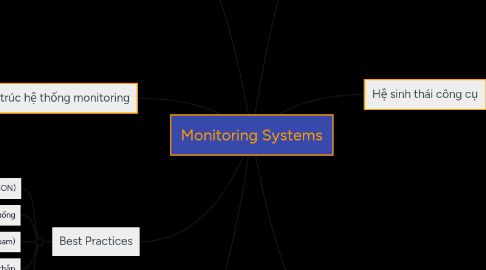Monitoring Systems
저자: Trần Quốc Huy


1. Introduction
1.1. Tầm quan trọng của monitoring
1.2. Đảm bảo hiệu năng, độ ổn định, phản hồi nhanh sự cố
1.3. Đặc biệt quan trọng với hệ thống phân tán, microservices
2. Pillars of Observability
2.1. Logs
2.1.1. Ghi sự kiện theo thời gian
2.1.2. Hữu ích cho debug, audit
2.1.3. Công cụ: ELK, Loki, Fluentd
2.2. Metrics
2.2.1. Time-series data (CPU, RPS, latency)
2.2.2. Phân tích hiệu suất
2.2.3. Công cụ: Prometheus, Grafana, Datadog
2.3. Traces
2.3.1. Theo dõi hành trình của request qua các services
2.3.2. Tìm bottleneck, root cause
2.3.3. Công cụ: OpenTelemetry, Jaeger, Zipkin
3. Hệ sinh thái công cụ
3.1. Logging
3.1.1. Elasticsearch
3.1.2. Logstash
3.1.3. Kibana
3.1.4. Loki
3.2. Metrics
3.2.1. Prometheus
3.2.2. Grafana
3.2.3. Datadog
3.2.4. CloudWatch Metrics
3.3. Tracing
3.3.1. AWS X-Ray
3.3.2. OpenTelemetry SDK
3.3.3. Jaeger
3.4. Alerting
3.4.1. Alertmanager
3.4.2. SNS, Slack, Email
